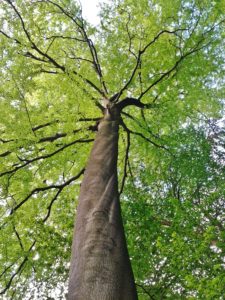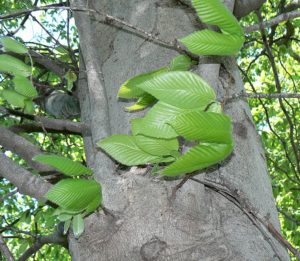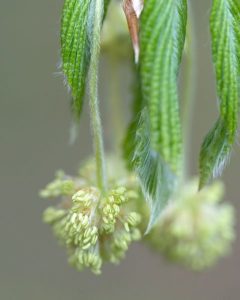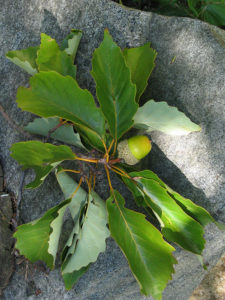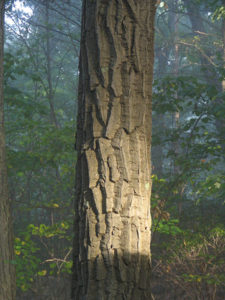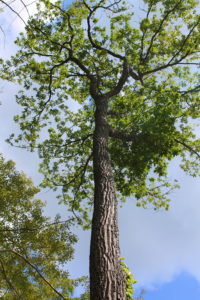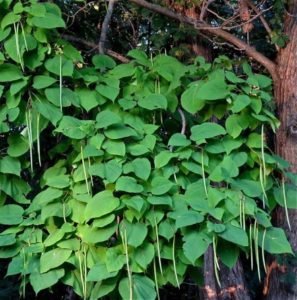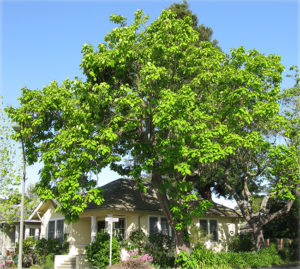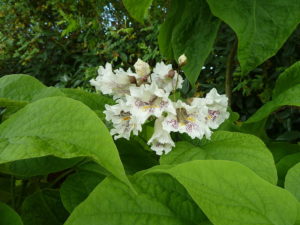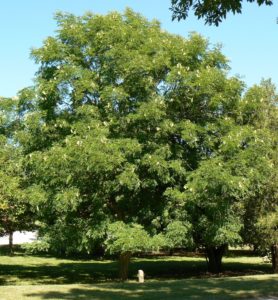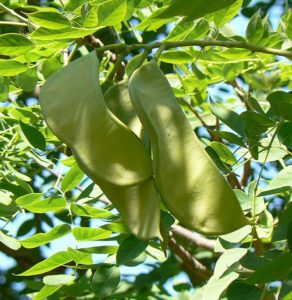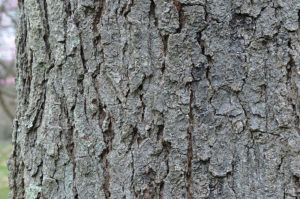THE LEAFLET
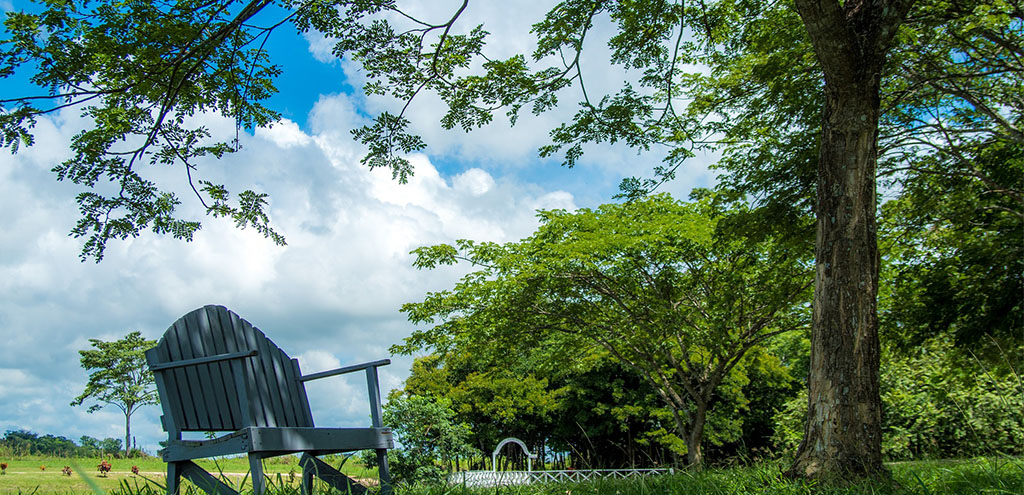
Trees That Have Got it Made in the Shade
Shade trees can beautify your yard, reduce energy costs, and improve air and water quality. Many of these large trees offer seasonal benefits, such as flowers or a change of leaf color. While the golden oldies of American forests like pines, maples, and birches are common choices, we wanted to highlight some of the other native trees that thrive in D.C. Remember, the best time to plant a tree was 20 years ago. The second best time? Right now.
Bonus -we can plant all of these trees for free through our residential planting program and since they will mature into large shade trees, if you decide to purchase and plant one yourself you get $100 back if you submit a tree rebate to us.
- American Beech | Fagus grandifolia
American Beech (Fagus grandifolia)
The most common tree in D.C., the American beech is a densely canopied (great for cooling your property) tree, which a long history in the US: legend has it that Mr. Boone inscribed “D. Boone kilt a bar, 1803” on the trunk of an American beech tree in Tennessee. While you hopefully won’t be carving anything into its smooth, blue-hued bark, you (and local birds) will enjoy its small, visually unique beech nuts that grow in showy pods.
Often described as stately, formal, and sturdy, the American beech fits well into D.C. stereotypes and would fit just as nicely as an addition to your property. Let us help you plant it!
Chestnut Oak (Quercus montana)
A stately giant, the chestnut oak is a member of the white oak group with chestnut-like leaves. A low maintenance tree, the chestnut oak is also noted for its ability to survive on steep, rocky sites where other oaks in its range cannot. Its foliage provides quite the show: it unfurls pink and becomes silvery before finally becoming dark green. The chestnut oak is also known for its beautiful silvery-white bark.
The powerhouse of any eastern American forest is the oak – and the chestnut oak has it all going on. Let us help you plant it!
- Northern Catalpa | Catalpa speciosa
Northern Catalpa (Catalpa speciosa)
This is a tree that demands your attention. White, showy flowers. Giant heart-shaped leaves. Dangling bean-like seed pods. Twisting trunk and branches. How could you not stop to take it in? And with all of these unique features, the Northern Catalpa is popular with kids as well.
This unique and hardy tree is a fast grower that may find a perfect home in your yard. Let us help you plant it!
Kentucky Coffeetree (Gymnocladus dioicus)
Kentucky coffeetrees are underrated work horses of an urban forest, as they’re a tough shade tree that’s resistant to insects and diseases. They get their name from the long pods holding seeds produced by female trees, which were ground and used as a coffee substitute by early settlers.
They even get better as they age! Its rough, dark brown bark is visually interesting, becoming scaly with curved edges as the tree matures. Long, large clusters of greenish-white flowers bloom in the late spring as the leaves mature and the flowers of the female tree have a delicate rose like fragrance.
This picturesque tree would probably be a great fit for your space. Let us help you plant it!
